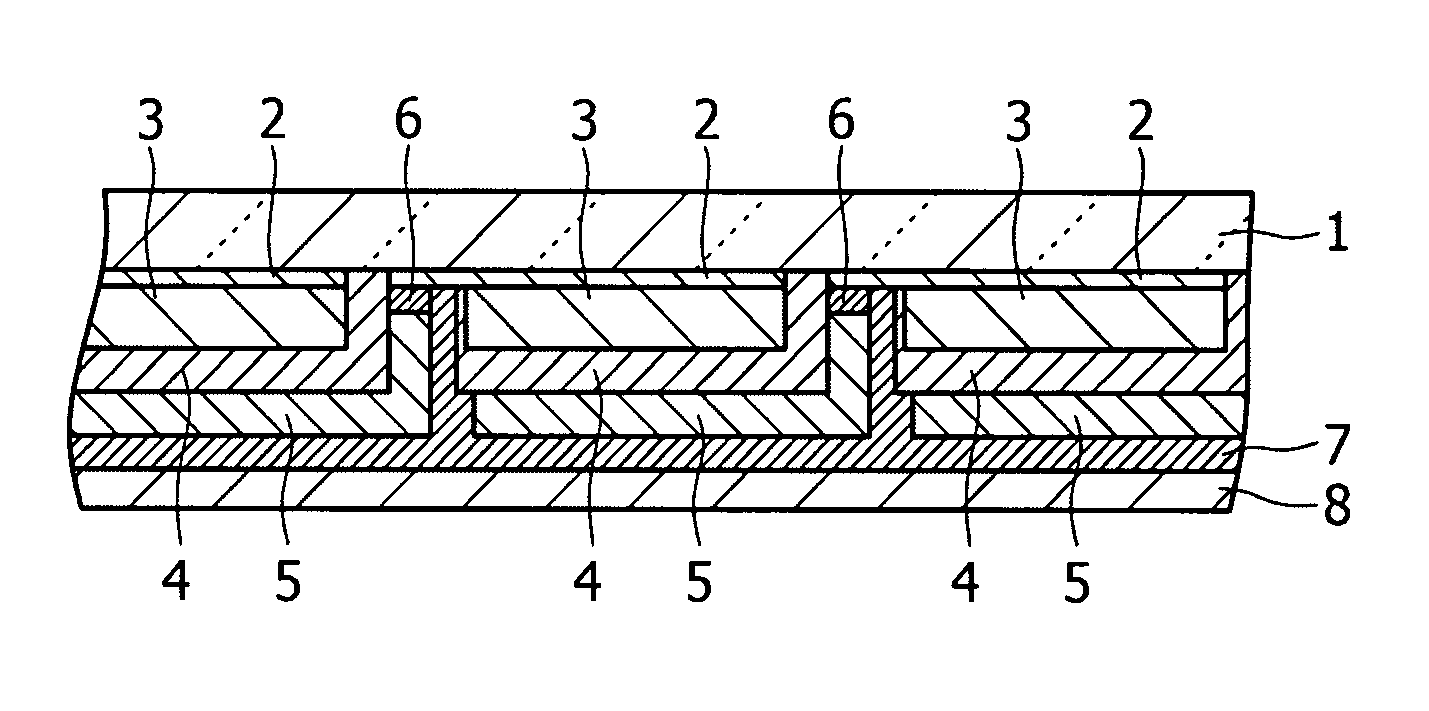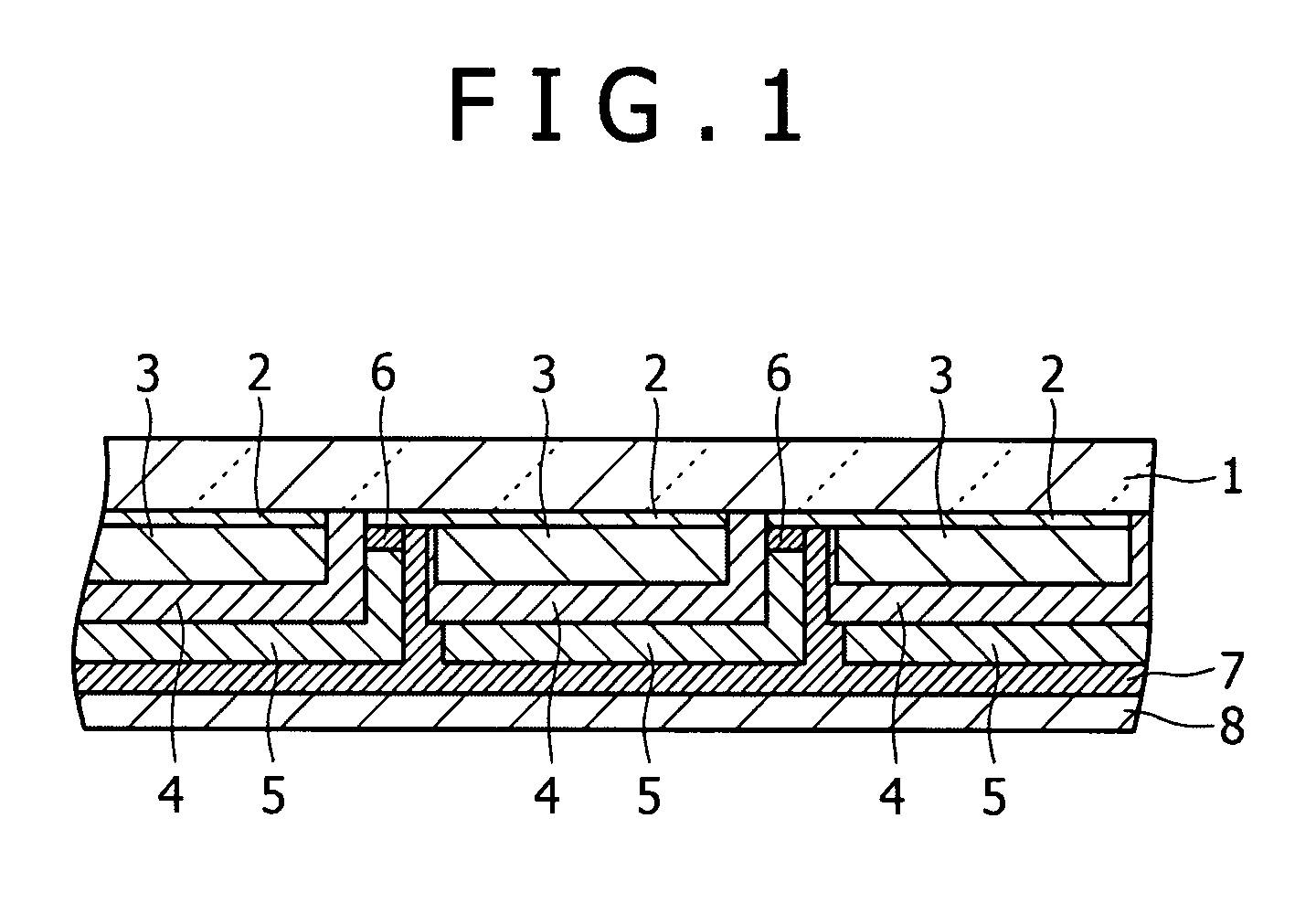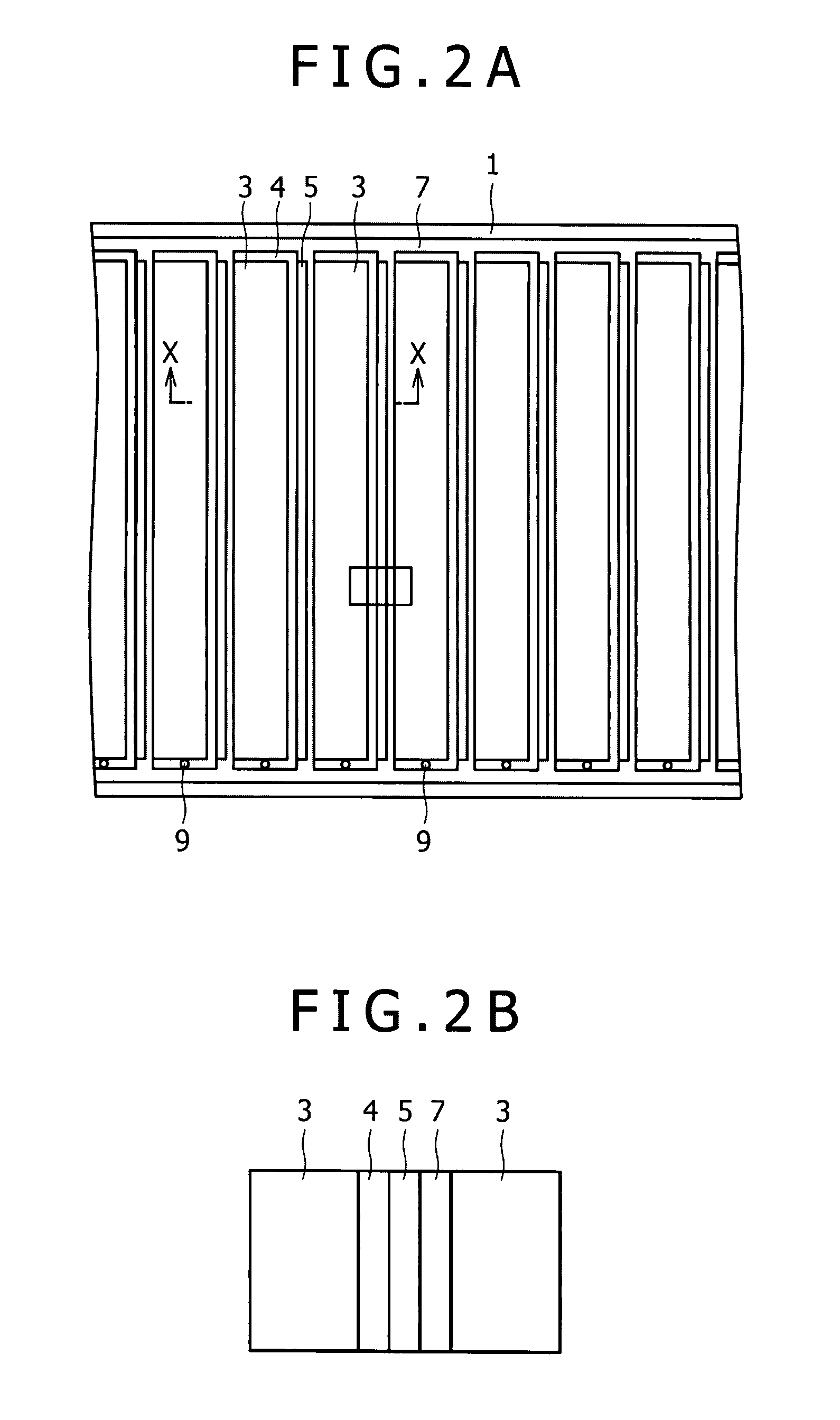Dye-sensitized photoelectric conversion element module and a method of manufacturing the same, and electronic apparatus
a technology of photoelectric conversion element and dye sensitization, which is applied in the direction of cell components, final product manufacturing, sustainable manufacturing/processing, etc., can solve the problems of unsuitable thinning and weight saving of dye sensitized solar cell modules having z-type structures, and the inability to prevent dye adsorption to the counter electrode in terms of structure, so as to achieve no deterioration of characteristics and save weigh
- Summary
- Abstract
- Description
- Claims
- Application Information
AI Technical Summary
Benefits of technology
Problems solved by technology
Method used
Image
Examples
example 1
[0074]After an FTO film was formed on a glass substrate, the FTO film was patterned by etching to eight stripe-shaped patterns so as to define a gap, having a width of 0.5 mm, between each two stripe-shaped patterns. After that, ultrasonic cleaning was carried out by using acetone, alcohol, an alkali system cleaning liquid, and ultrapure water in order, and drying was sufficiently carried out.
[0075]A titanium oxide paste made by Solaronix was applied onto the glass substrate so as to obtain eight-shaped patterns (a total area was 16 cm2) each having a width of 5 mm, and a length of 40 mm by using a screen printer. With regard to the paste, a transparent Ti-Nanoxide TSP paste, and a Ti-Nanoxide DSP containing therein scattering particles were laminated in order from the glass substrate side so as to have a thickness of 7 μm, and a thickness of 13 μm, respectively. As a result, a porous TiO2 film having a thickness of 20 μm in total was obtained. After the porous TiO2 film was burnt i...
example 2
[0084]A dye-sensitized photoelectric conversion element module was manufactured similarly to the case of Example 1 except that a counter electrode was formed into a foil shape with a carbon paste.
example 3
[0085]A dye-sensitized photoelectric conversion element module was manufactured similarly to the case of Example 1 except that a counter electrode was formed into a foil shape with a platinum-supported carbon paste.
PUM
| Property | Measurement | Unit |
|---|---|---|
| melting point | aaaaa | aaaaa |
| thickness | aaaaa | aaaaa |
| particle diameter | aaaaa | aaaaa |
Abstract
Description
Claims
Application Information
 Login to View More
Login to View More - R&D
- Intellectual Property
- Life Sciences
- Materials
- Tech Scout
- Unparalleled Data Quality
- Higher Quality Content
- 60% Fewer Hallucinations
Browse by: Latest US Patents, China's latest patents, Technical Efficacy Thesaurus, Application Domain, Technology Topic, Popular Technical Reports.
© 2025 PatSnap. All rights reserved.Legal|Privacy policy|Modern Slavery Act Transparency Statement|Sitemap|About US| Contact US: help@patsnap.com



